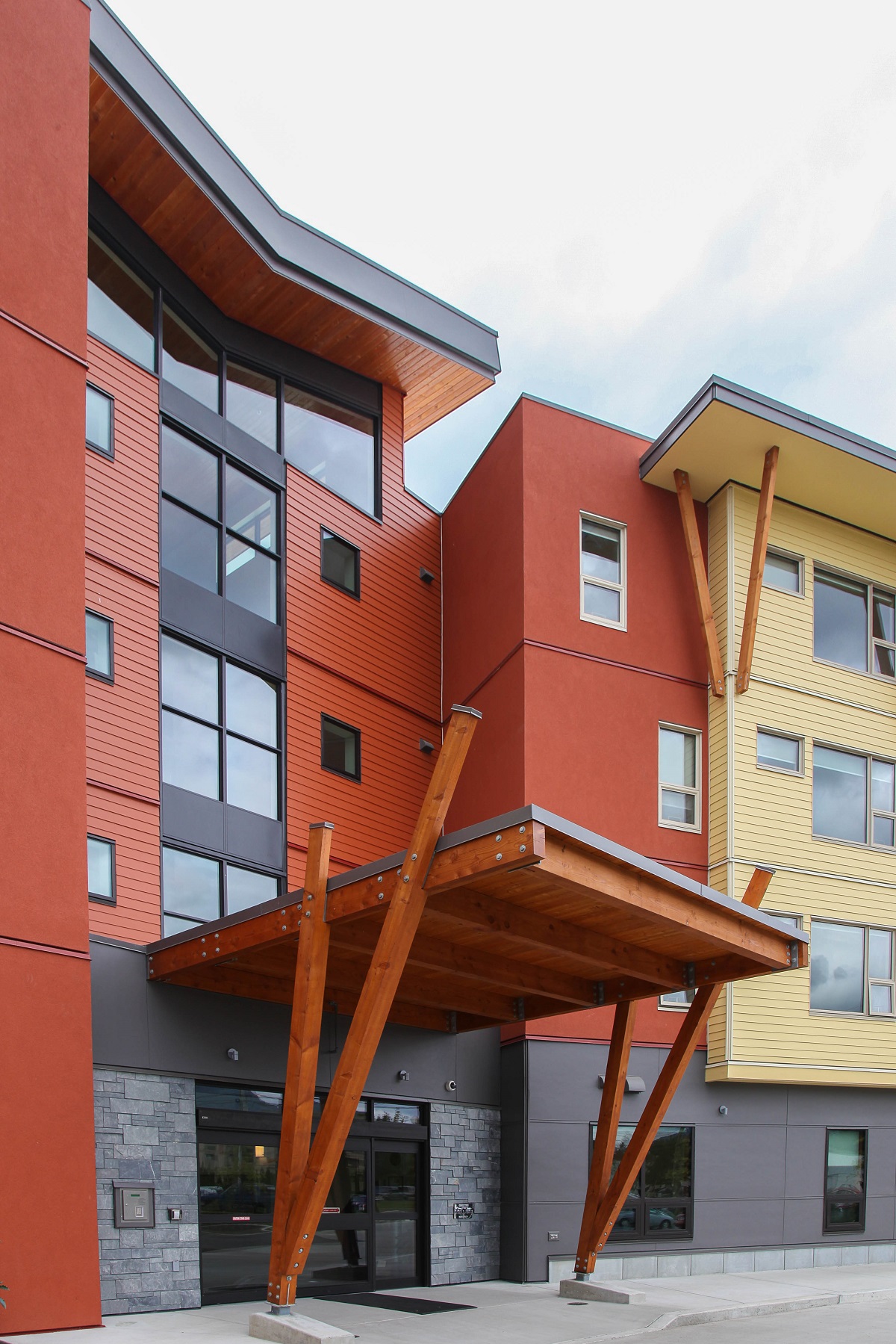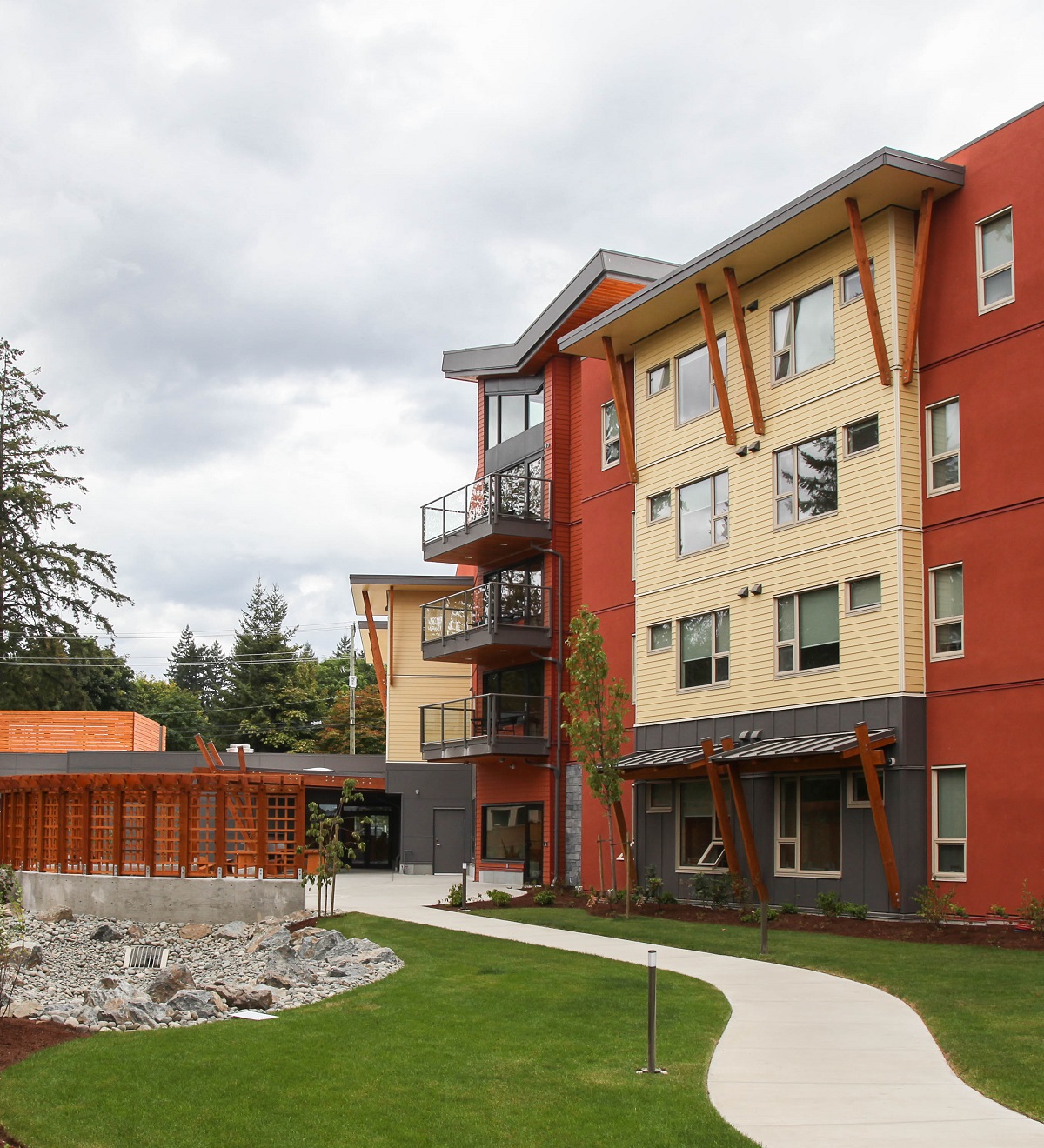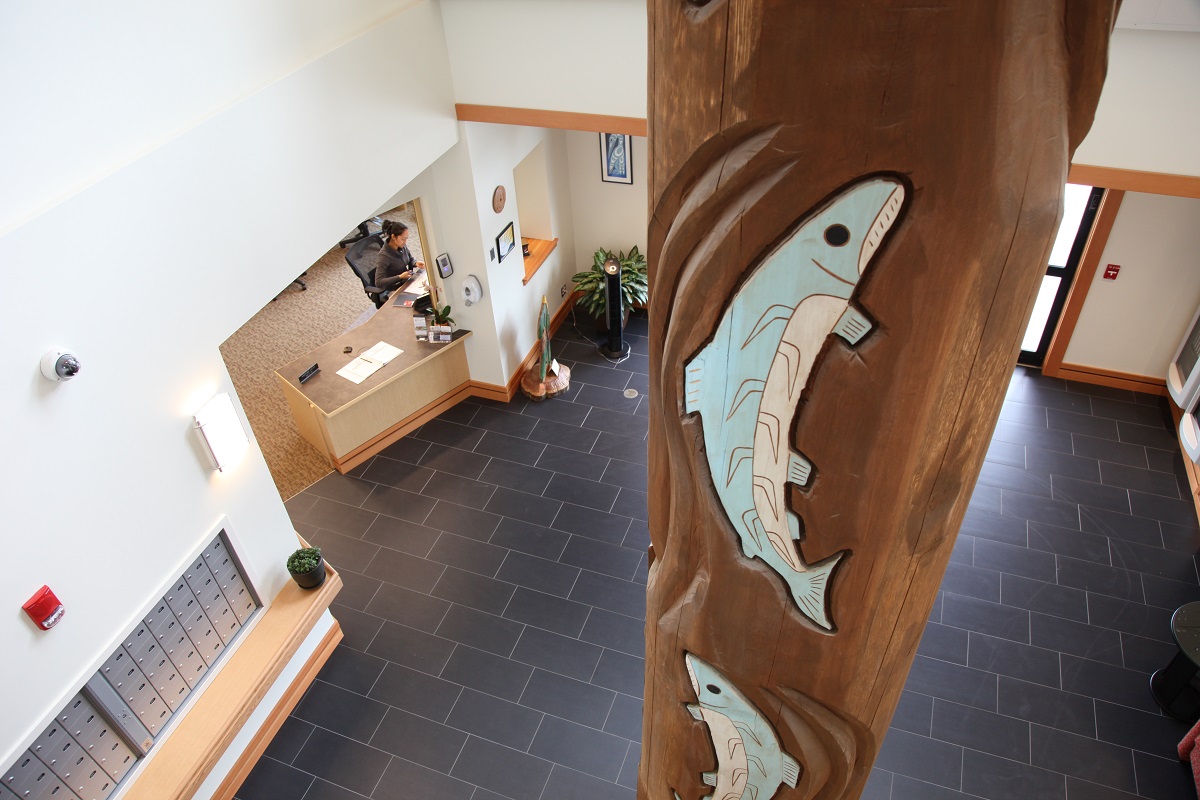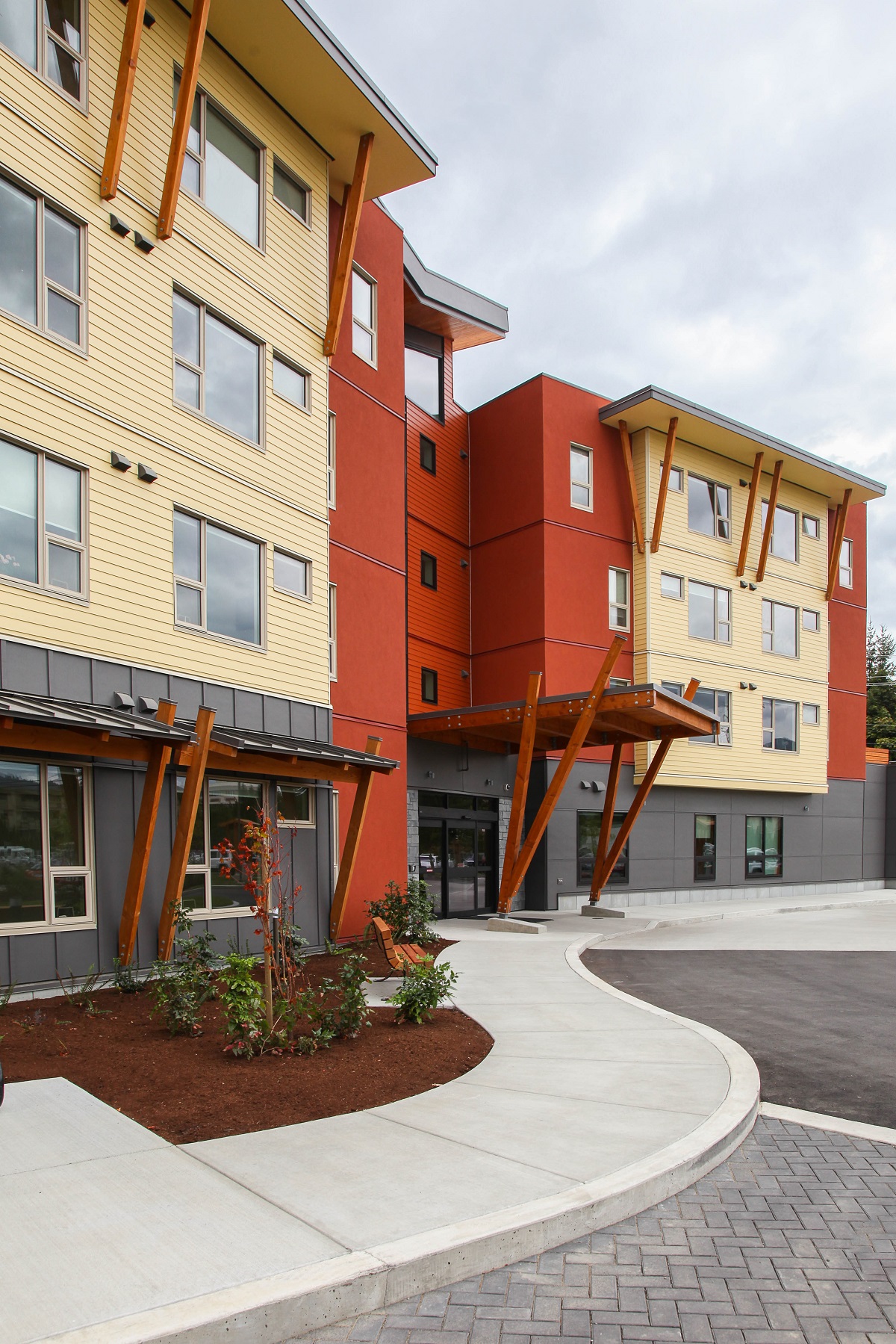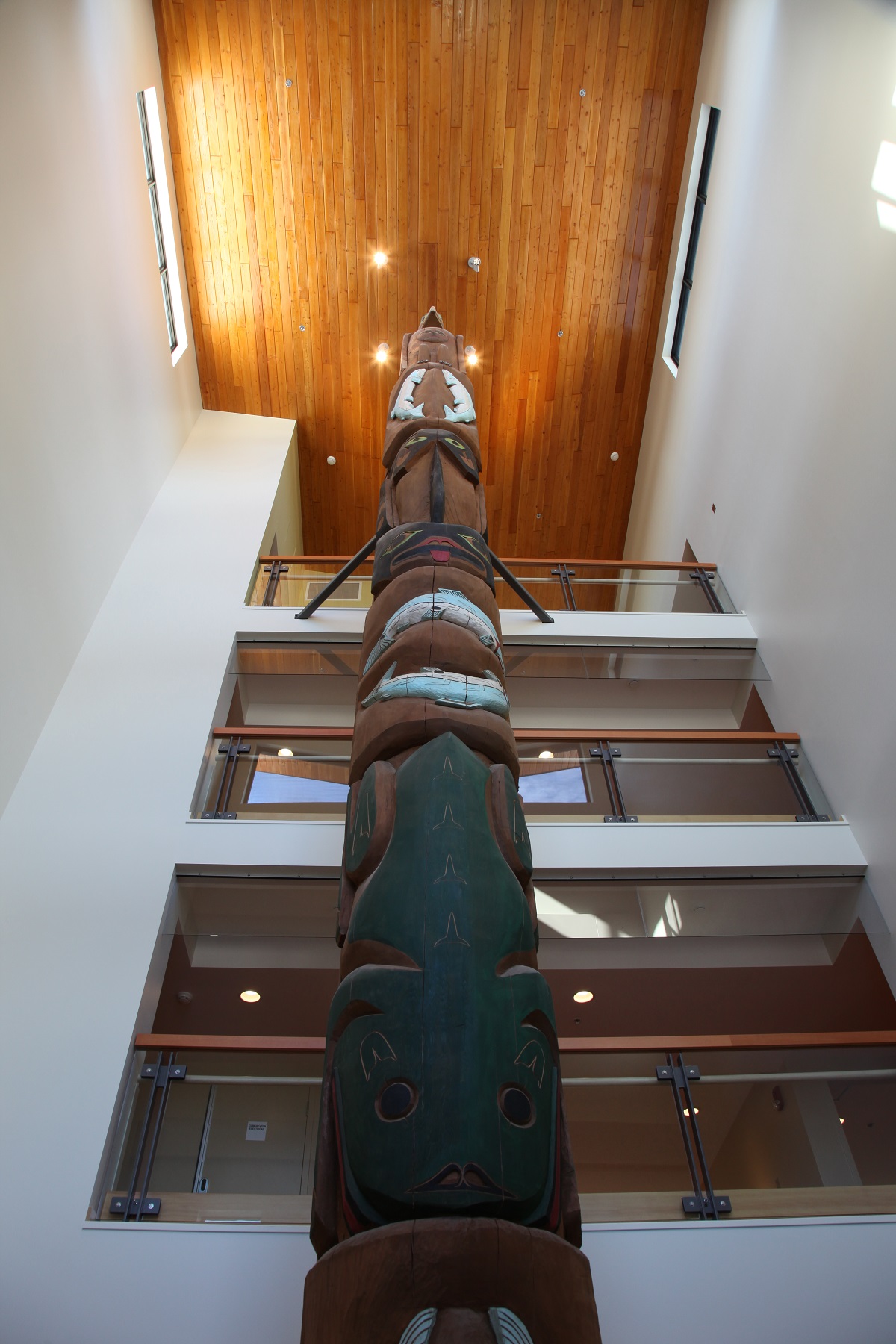Built by local hands, care taken to make it feel like home
The Ts’i’ts’uwatul’ Lelum Assisted Living facility in Duncan, British Columbia incorporates elements of traditional Indigenous culture in its wood design—and uses finishing touches, such as wood decor, to bridge connections from past to present for residents receiving care.
- Post-and-beam construction used for the entry canopy, roof deck, and rear patio covered areas, as well as ‘eyebrows’ over windows on the first level.
- Douglas-fir is used for the struts and soffits of the upper ‘butterfly’ roof, as well as in the design of the feature semi-circular trellis and pergola around the fire pit.
- An alternative solution to the provisions of the BC Building Code was used to allow for a four-storey interconnected atrium.
Two wings, four-stories high of accessible assisted living accommodation
The four-storey facility provides fully accessible assisted living accommodation for seniors with 46 single and four double self-contained units. The building includes common living space, dining, theatre and craft rooms, laundry on each floor, as well as other personal care facilities. The building’s main lobby extends the full four-storey height of the building and features a 13-metre-high totem pole. It divides the building into two wings of fully accessible assisted living accommodation for 54 seniors, the majority of whom are elders from the Cowichan Tribes. The front entrance canopy is supported on inclined posts, a detail echoed on a smaller scale in the overhanging eaves.
Located on the traditional territory of the Cowichan Tribes, wood for the conventional wood-frame structure was locally sourced and the Nation’s members were employed wherever possible. The building is set in landscaped grounds that include a gathering area and Indigenous plant species, such as flowering red currant, vanilla leaf, camas and sword ferns.
Alternative solution to achieve interconnected atrium space
Post-and-beam construction is used in the entry canopy, roof deck, and rear patio covered areas, as well as the ‘eyebrows’ over the windows on the first level. The struts and soffits of the upper butterfly roof and the feature semi-circular trellis and pergola around the fire pit are made of Douglas-fir. The lobby acts as a common area for the entire building and contains artwork and furnishings that reflect Cowichan culture. All four floors have a generous interior gathering space overlooking the lobby, enhancing the sense of community.
At the lowest level to the west of the entrance atrium, the amenity spaces are contained within a concrete structure which acts as a podium for the wood frame upper floors. The concrete structure was necessary to separate the residential and assembly spaces. The lateral system for the structure consists of conventional wood-frame shear walls with plywood on one side, located between suites and along the corridors. Tie-down anchors are used at the ends of the shear walls.
“For the Cowichan First Nation, wood is important from both a cultural and a spiritual perspective. The significant presence of wood throughout Ts’i’ts’uwatul’ Lelum creates a familiar and welcoming atmosphere, where the Elders feel connected to their community”.
Kevin Albers, CEO
Makola Housing Society
